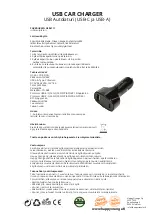
The Braking System
If this happens, you will immediate-
ly notice that the brake pedal goes
down much farther and you need to
press on it much harder. A much
longer distance will be needed to
stop the car.
Slow the car by downshifting to a
lower gear and removing your foot
from the accelerator pedal. Pull to
the side of the road as soon as it is
safe. Because of the longer stop-
ping distance needed, brake system
failure is very hazardous. It is best
to have your car towed, but if you
must drive the car in this condition,
be extremely cautious. Have your
car repaired as soon as possible.
Anti-lock Brakes
All models except S model have an
Anti-lock Brake System (ABS) as
standard equipment.
ABS helps you maintain steering
control. It does this by helping you
to prevent the wheels from locking
up and skidding.
The ABS is always "On". It
requires no special effort or driving
technique. You will feel a pulsation
in the brake pedal when the ABS
activates.
Activation varies with the amount
of traction your tires have. On dry
pavement, you will need to press on
the brake pedal very hard before
you feel the pedal pulsation that
means the ABS has activated.
However, you may feel the ABS
activate immediately if you are
trying to stop on snow or ice. Under
all conditions, the ABS is helping to
prevent the wheels from locking so
you can retain steering control.
You should continue to press on the
brake pedal with the same force.
You may feel a slight movement of
the brake pedal just after you start
the engine. This is the ABS
working.
Driving
Main Menu
Table of Contents
▲
▼
















































